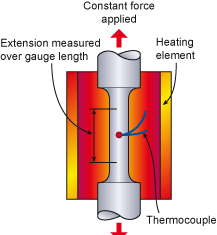ATMOSPHERIC PRESSURE
The sensation of being underwater and feeling the pressure of the water is familiar to many people. The earth’s atmosphere is like an ocean of air that has weight and exerts pressure. The earth’s surface can be thought of as being at the bottom of this ocean of air. Different locations are at different depths. For instance, there are sea-level locations such as Miami, Florida, or mountainous locations such as Denver, Colorado. The atmospheric pressures at these two locations are different. For now, we will assume that we live at the bottom of this ocean of air. The atmosphere that we live in has weight just as water does, but not as much. Actually earth’s atmosphere exerts a weight or pressure of 14.696 psi at sea level. This is known as a standard condition.


(known as a bell jar) and the atmosphere is removed from the jar, the
column of mercury drops to the level of the puddle in the dish.
Atmospheric pressure can be measured with an instrument called a barometer, which is a glass tube about 36 in. long that is closed on one end and filled with mercury. It is then inserted open-side-down into a puddle of mercury and held upright. The mercury will try to run down into the puddle, but it will not all run out. This is because the atmosphere is pushing down on the puddle, and a vacuum is formed in the top of the tube. At sea level the mercury in the tube will fall to 29.92 in. when the surrounding atmospheric temperature is 70°F, Figure 1. This is a standard that is used for comparison in engineering and scientific work. If the barometer is taken up higher, such as on a mountain, the mercury column will start to fall. It will fall about 1 in./1000 ft of altitude. When the barometer is at standard conditions and the mercury drops, the weather forecaster will talk about a low-pressure system; this means the weather is going to change. Listening closely to weather reports will make these terms more meaningful.

and contracts with atmospheric pressure changes.
If the barometer is placed inside a closed jar and the atmosphere evacuated, the mercury column falls to the level of the puddle at the bottom, Figure 2. When the atmosphere is allowed back into the jar, the mercury again rises because a vacuum exists above the mercury column in the tube. The mercury in the column has weight and counteracts the atmospheric pressure of 14.696 psi at standard conditions. A pressure of 14.696 psi, then, is equal to the weight of a column of mercury (Hg) 29.92 in. high. The expression “inches of mercury” thus becomes an expression of pressure and can be converted to pounds per square inch. The conversion factor is 1 psi 2.036 in. Hg (29.92 14.696); 2.036 is often rounded off to 2 (30 in. Hg 15 psi). Another type of barometer is the aneroid barometer. This is a more practical instrument to transport. Atmospheric pressure has to be measured in many places, so instruments other than the mercury barometer had to be developed for field use, Figure 3.
Copied from REFRIGERATION & AIR CONDITIONING TECHNOLOGY by WILLIAM C. WHITMAN, WILLIAM M. JOHNSON, JOHN A. TOMCZYK and EUGENE SILBERSTEIN












